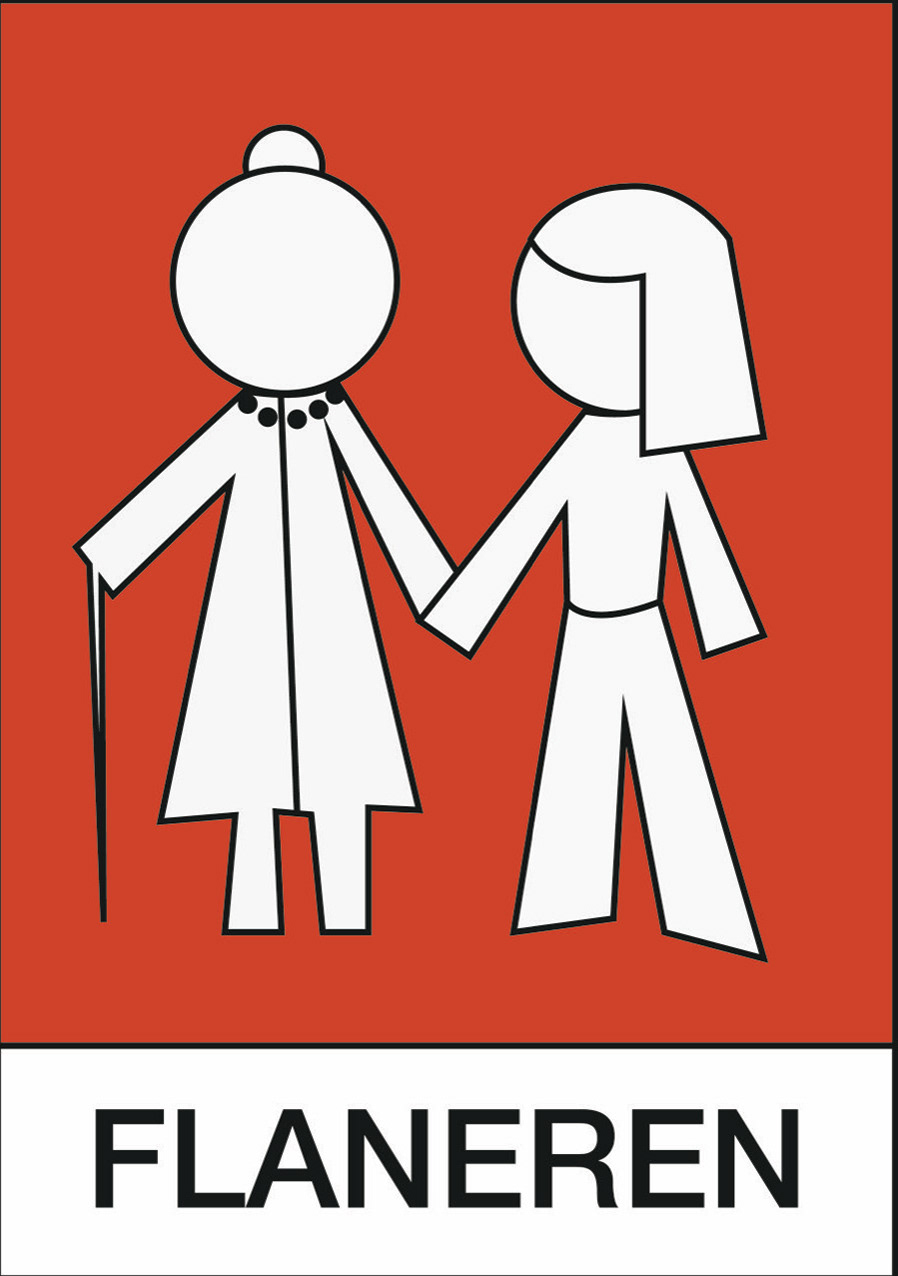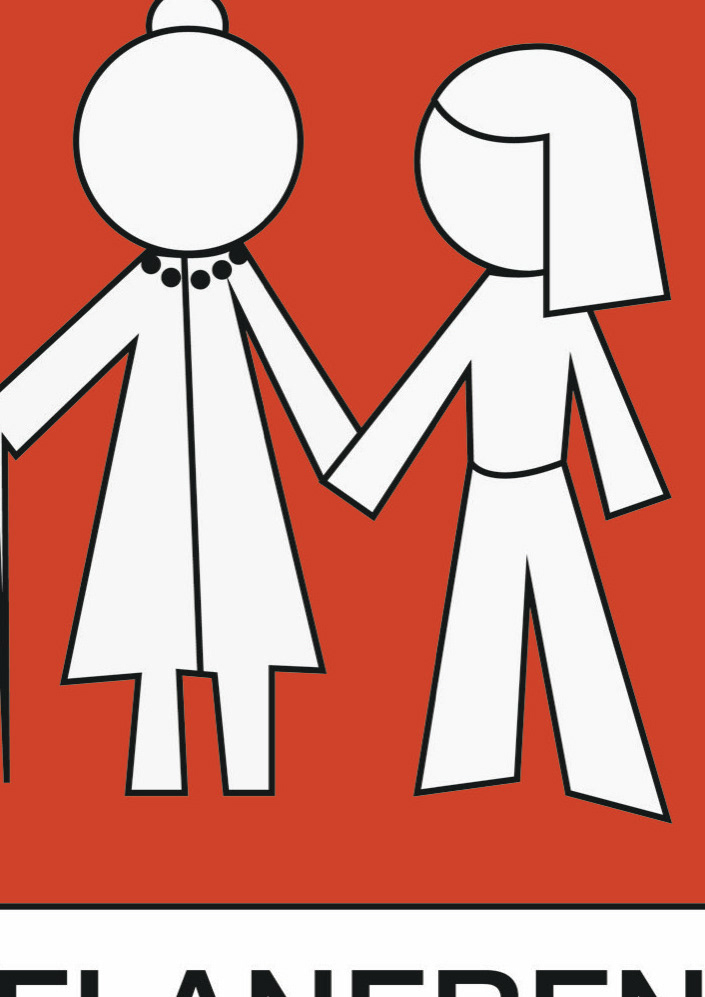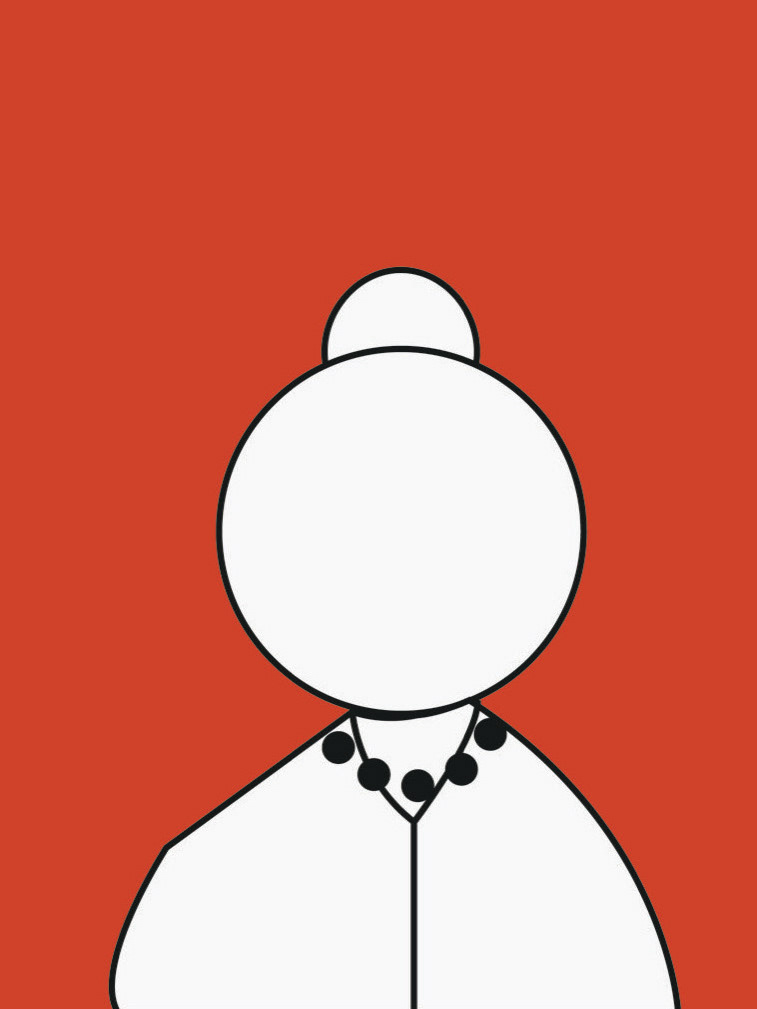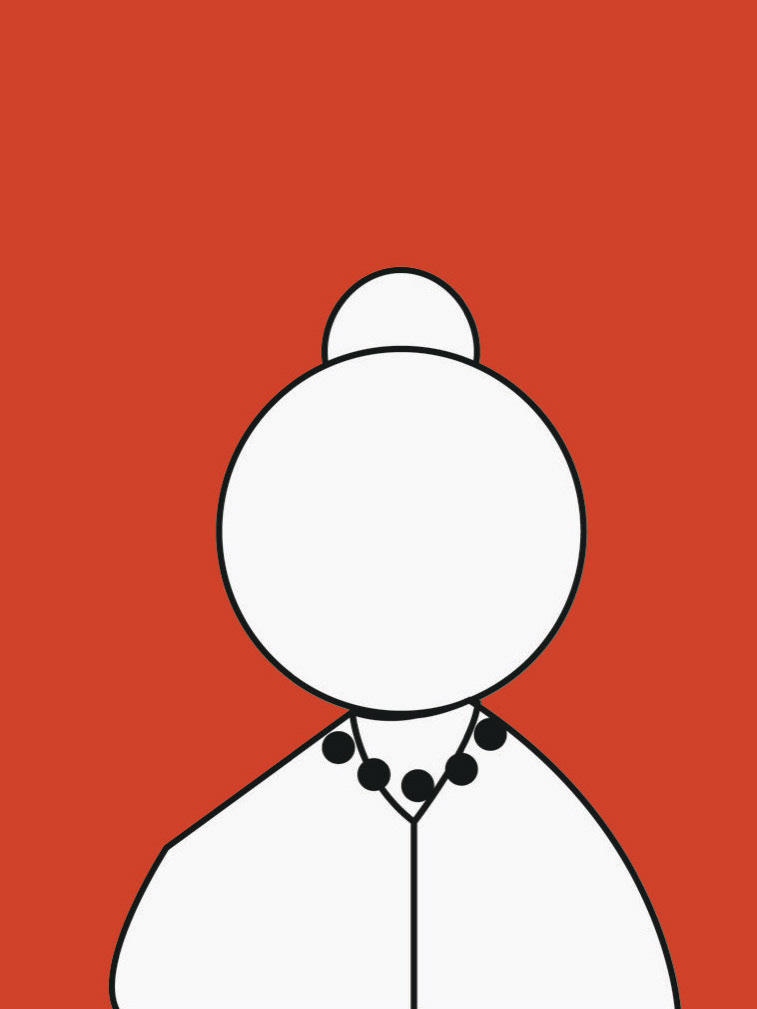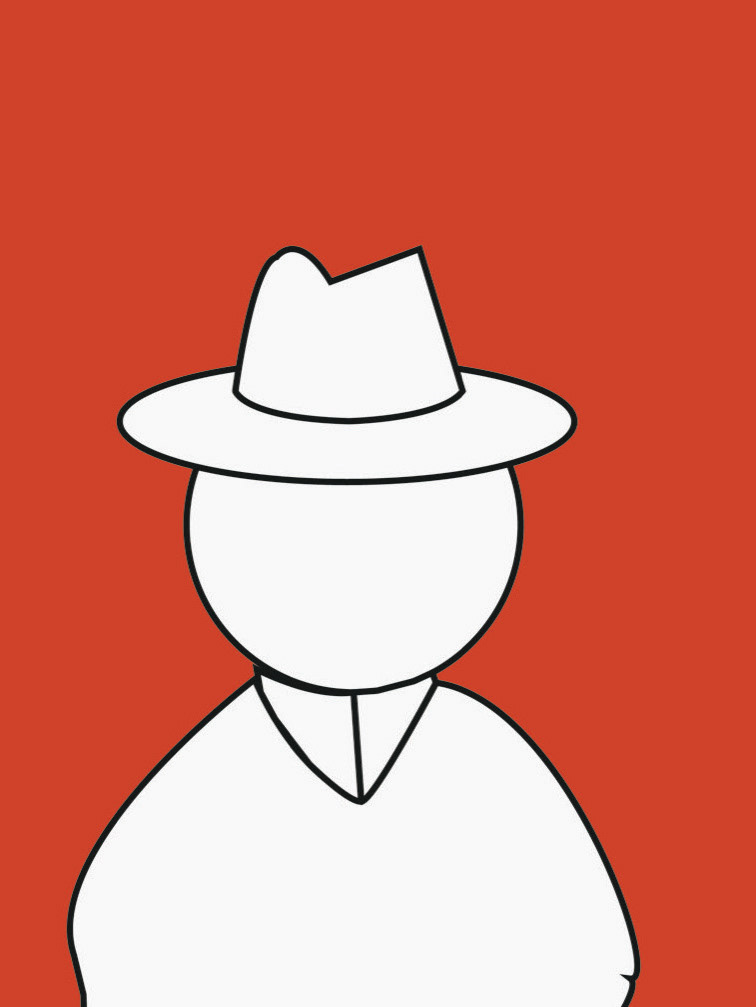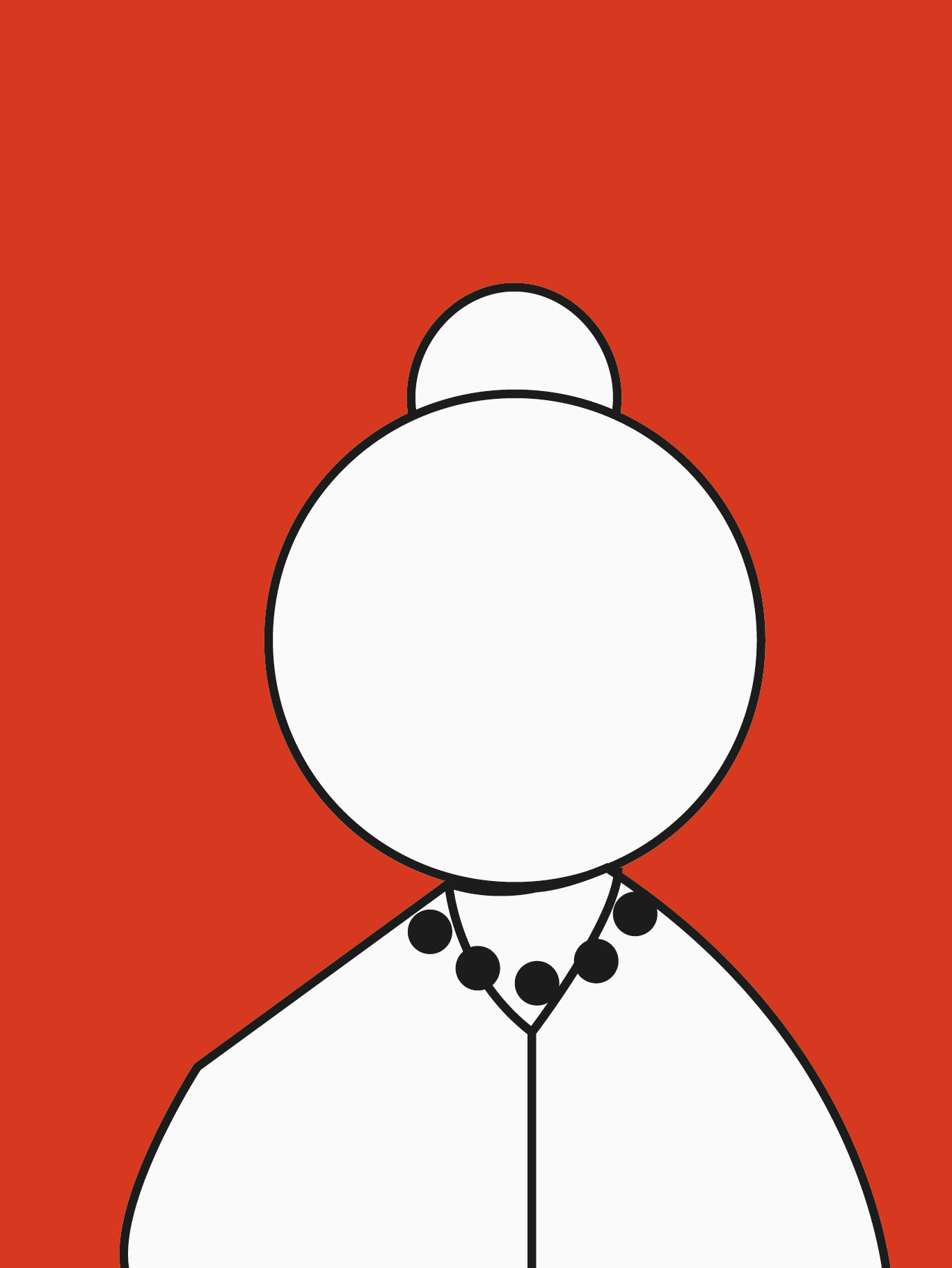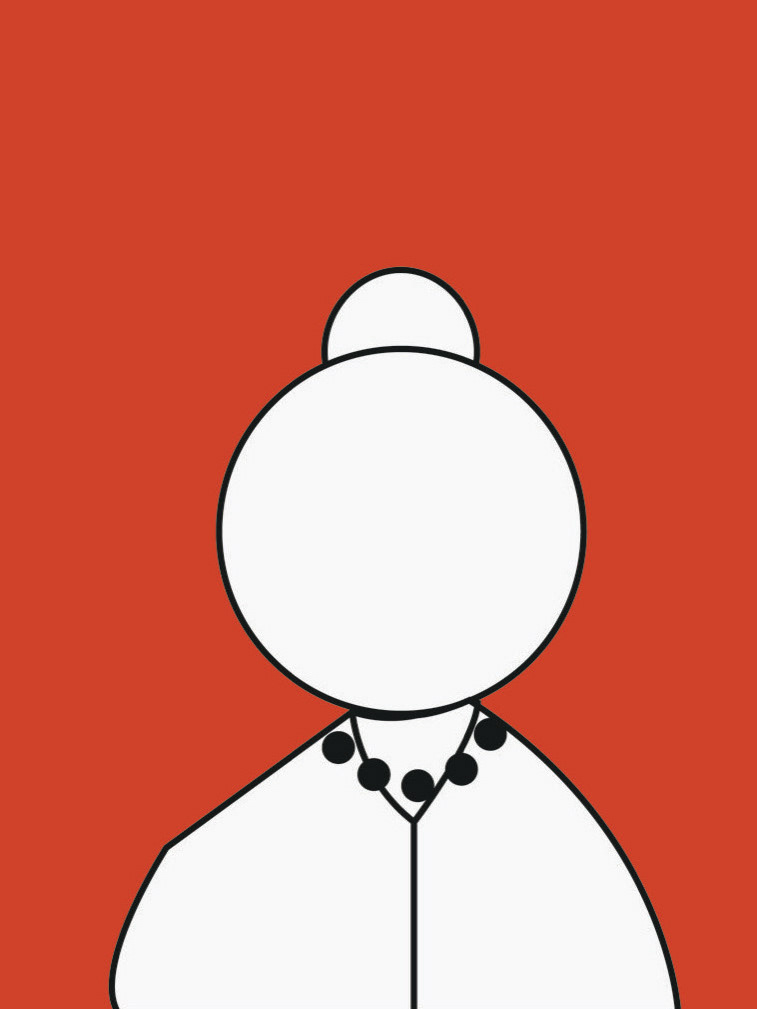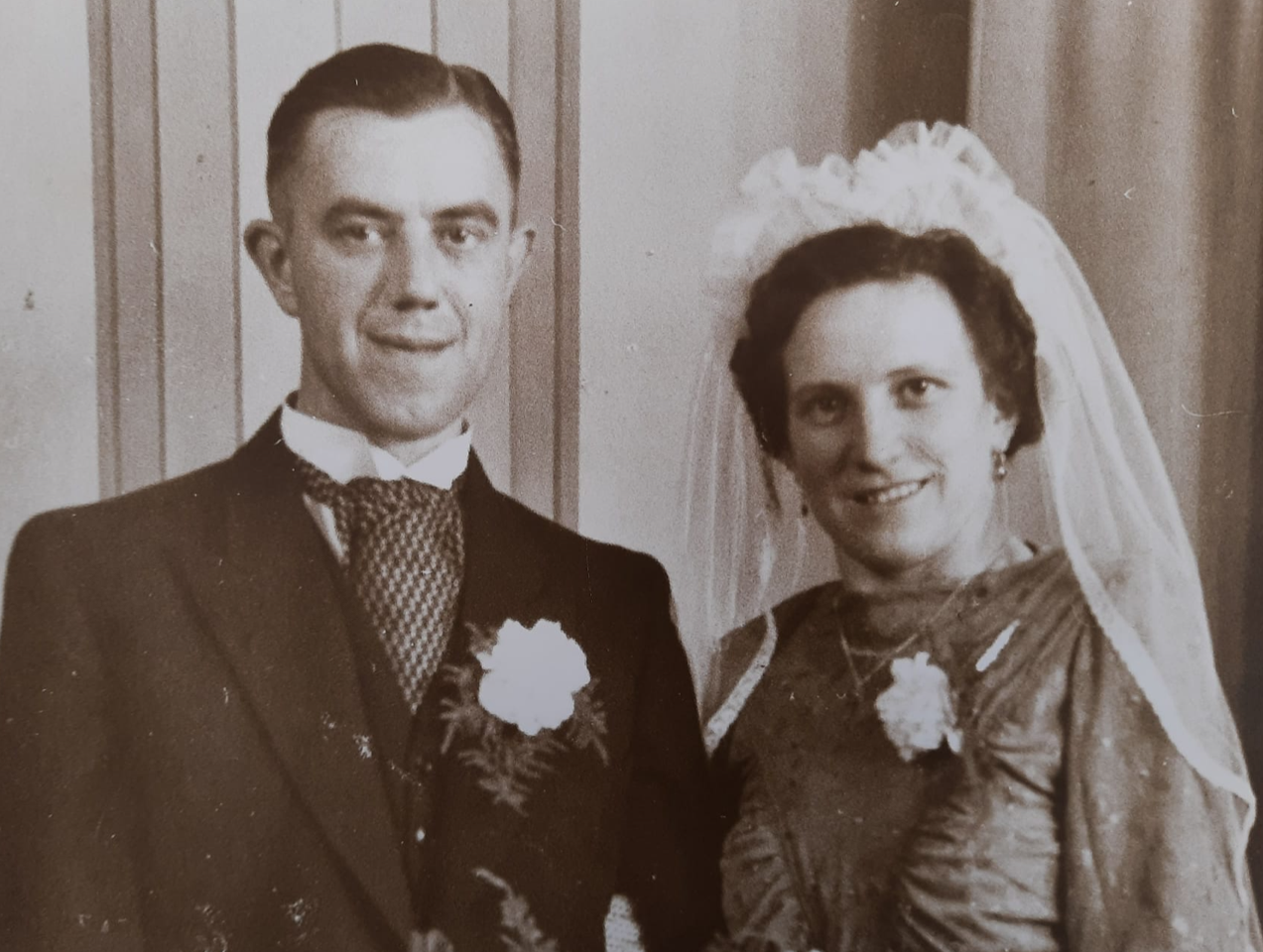
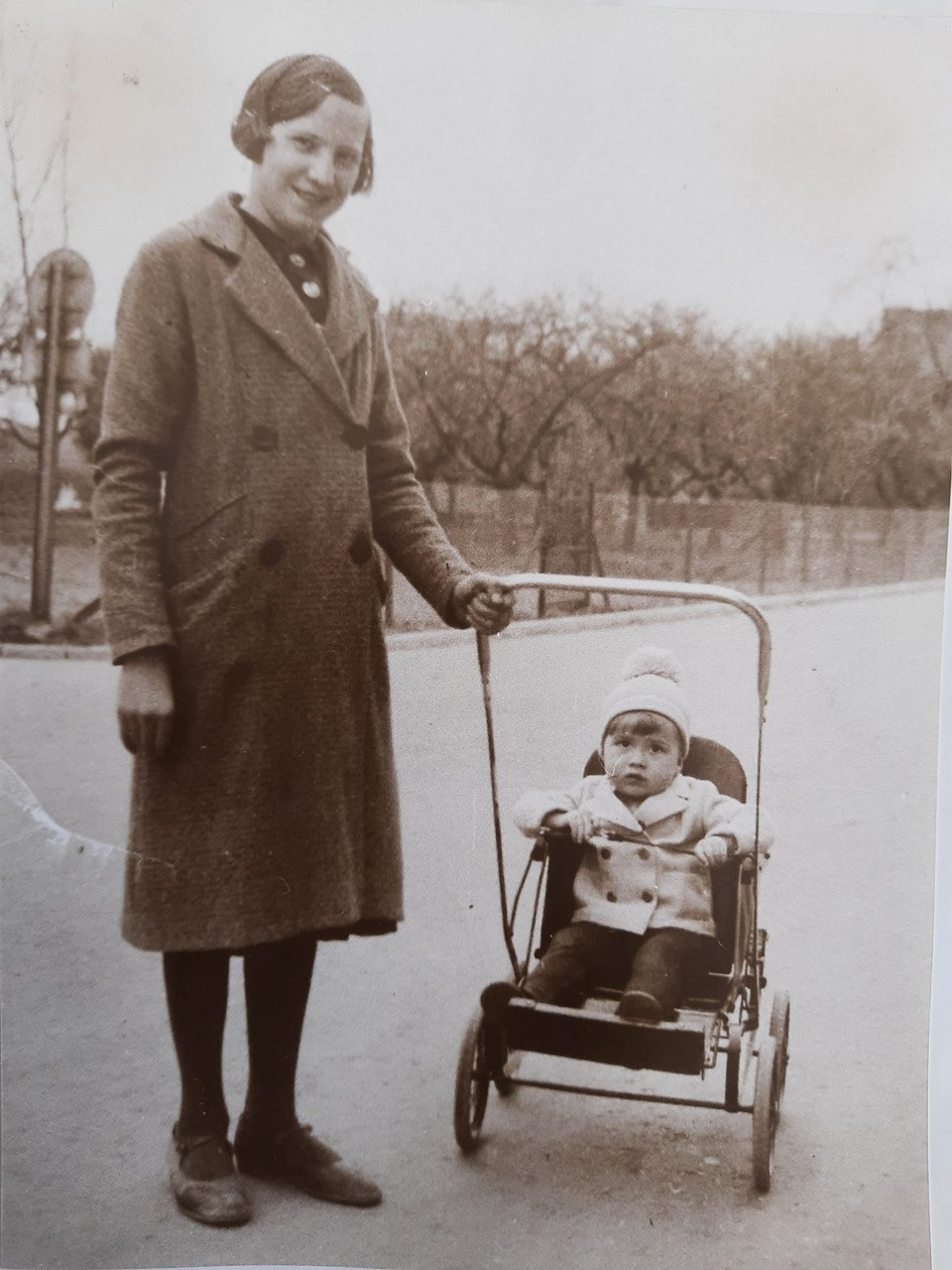
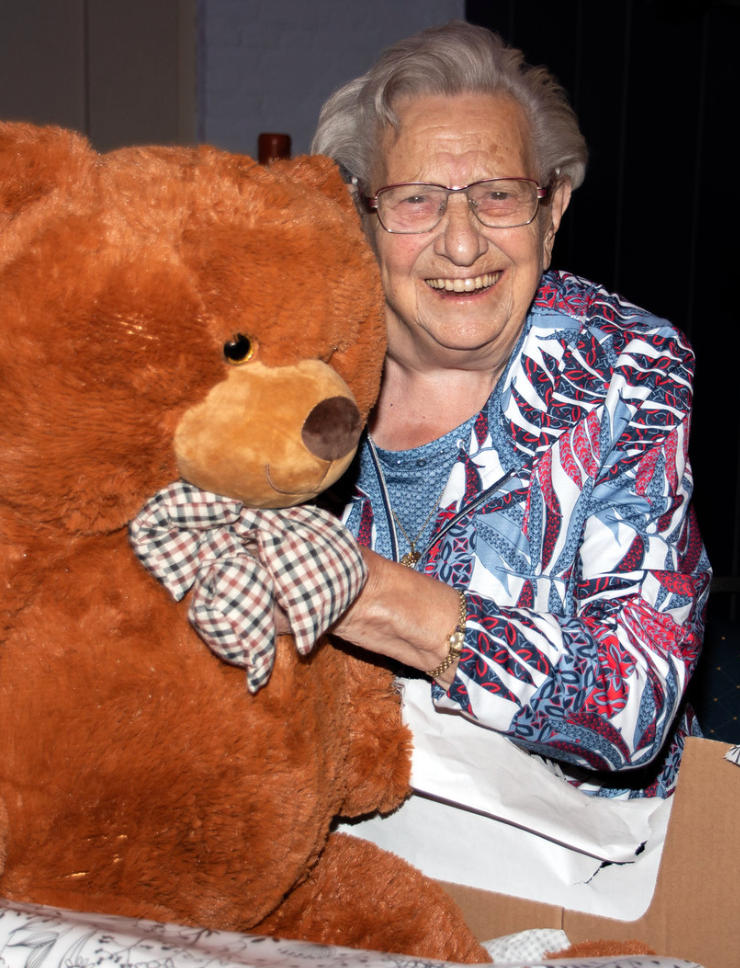
scroll down for English
ANNA
1921-2023
ANNA
1921-2023
HOENSBROEK - Op tafel liggen twee breinaalden, één driekwart gebreide sok in de kleuren grijs en pastelroze én gebreide eierverwarmers. “Ik heb er honderdtwintig gemaakt voor de gasten van mijn honderdste verjaardag”, zegt Anna trots.
Ze zit enigszins laag in een grijze fauteuil aan de houten tafel en bijna iedere zin eindigt ze lachend. Ze draagt een zwarte pantalon, haar voeten zijn ingepakt in vleeskleurige sokken en worden verwarmd door pantoffels. We worden het niet eens over de kleur van haar met glitter-kraaltjes versierde coltrui. Is ‘ie nu paars, lila of toch grijs? “Het is grijsblauw”, meent Anna.
Op haar honderdste verjaardag droeg ze een broekpak met blauwe accenten. Ook haar trouwjurk was blauw. Al is dat niet per se haar lievelingskleur. Ze vindt blauw gewoon een mooie kleur en broeken zitten nu eenmaal lekkerder dan rokken.
Anna heeft een groot deel van haar leven alleen maar rokken en jurken gedragen, want toen zij opgroeide hoorde je dat als meisje te doen. Ze woonde met zeven zussen en een broertje - die op jonge leeftijd overleed - op een boerderij in het Limburgse Reuver. Geld was er allesbehalve in overvloed en er werd hard gewerkt.
Lange onderbroeken
Als het over haar jeugd gaat, heeft Anna geen tijd om te snoepen van haar appelvlaai. Ze vertelt over de vijfentwintig kippen, haar lieve ouders, de varkens en de aardappels die ze op haar klompen van het veld raapte. Als het sneeuwde, dan moest ze om de tien meter de sneeuw van de klompen afkloppen. De details somt ze op alsof het gisteren was, en dat voor een vrouw van honderd jaar. Als het koud was, droegen ze lange onderbroeken. Anna gaat erbij staan om het goed uit te beelden: ‘’Ja, dan had je aan de voorkant een touwtje en aan de zijkant knopen die je losmaakt als je naar de wc moest.” Ze schaterlacht.
Als het over haar jeugd gaat, heeft Anna geen tijd om te snoepen van haar appelvlaai. Ze vertelt over de vijfentwintig kippen, haar lieve ouders, de varkens en de aardappels die ze op haar klompen van het veld raapte. Als het sneeuwde, dan moest ze om de tien meter de sneeuw van de klompen afkloppen. De details somt ze op alsof het gisteren was, en dat voor een vrouw van honderd jaar. Als het koud was, droegen ze lange onderbroeken. Anna gaat erbij staan om het goed uit te beelden: ‘’Ja, dan had je aan de voorkant een touwtje en aan de zijkant knopen die je losmaakt als je naar de wc moest.” Ze schaterlacht.
Op het land droegen ze jurken die vies mochten worden. “Behalve op zondag, want dan hadden we mooie kleding. We gingen op één dag zelfs drie keer naar de kerk. Je moest er dan wel netjes uitzien”, vertelt Anna. Ze vervolgt: “Het liefst wilde ik die kleding niet uitdoen, omdat het zo mooi was." Anna’s moeder kocht op de markt goedkope lappen stof en eens in de zoveel tijd maakte een naaister er kleding van. Later naaide Anna’s zus kleding en zelfs de lichtblauwe trouwjurk kwam van haar zusters hand.
Alarm
Anna vindt het belangrijk om er netjes uit te zien. Van de broeken met gaten die mensen tegenwoordig dragen, moet ze dan ook niks hebben. Ook haar vier eigen kinderen moesten er netjes uitzien, maar het kon niet te veel geld kosten. Anna liet lappen stof op maat knippen die ze vervolgens aan elkaar naaide. Daar waar ze een ster is in breien, is naaien niet haar sterkste kant. “Ik liet de stoffen altijd iets groter knippen voor het geval het mis zou gaan.”
Anna vindt het belangrijk om er netjes uit te zien. Van de broeken met gaten die mensen tegenwoordig dragen, moet ze dan ook niks hebben. Ook haar vier eigen kinderen moesten er netjes uitzien, maar het kon niet te veel geld kosten. Anna liet lappen stof op maat knippen die ze vervolgens aan elkaar naaide. Daar waar ze een ster is in breien, is naaien niet haar sterkste kant. “Ik liet de stoffen altijd iets groter knippen voor het geval het mis zou gaan.”
Later kocht zij kleding bij de V&D en de C&A. En Anna droeg graag bij haar outfits bijpassende kettingen. Ze heeft ze in alle kleuren en maten. “Maar niet te duur hoor”, zegt ze. Nu valt het op dat Anna geen enkele sieraden meer draagt. Of toch wel? Onder haar trui tovert ze een koord vandaan. “Een alarm voor als ik val”, grinnikt ze.
Waarom trok Anna vanochtend die lila, grijze of in haar woorden grijsblauwe trui uit de kast? “Weet je”, zegt ze. “Ik heb het nu gewoon heel snel koud en het zit erg lekker.”
-------------------------------------------------------------------------------------------------------------------------------------
ANNA
1921-2023
HOENSBROEK – On the table there are two knitting needles, one knitted sock that is three quarters finished in pastel pink and grey and knitted egg warmers. “I made one hundred-twenty for the guests of my hundredth birthday” Anna says proudly.
She sits slightly low in a gray armchair at the wooden table, almost every sentence she ends with a smile. She is wearing black trousers; her feet are wrapped in skin-tone socks and are being warmed by slippers. We can't agree on the color of her glitter-beaded turtleneck sweater. Is it purple, lilac or gray? “It's grey-blue”, says Anna.
On her 100th birthday, she wore a pantsuit with blue accents. Her wedding dress was also blue. Although it isn’t necessarily her favorite color, she thinks blue is a beautiful color and pants are simply more comfortable than skirts.
Anna has only worn skirts and dresses for much of her life, when she grew up you were supposed to do that as a girl. She lived with seven sisters and a brother - who died at a young age - on a farm in Reuver, Limburg. Money was anything but plentiful and they were all hard works in the family.
Long johns
When we start talking about her childhood, Anna doesn't have time to enjoy her apple pie because there is so much to share. She speaks about the twenty-five chickens, her dear parents, the pigs and the potatoes she dug up from the field in her clogs. When it snowed, she had to knock the snow off the clogs every ten meters. She speaks about the details as if it took place yesterday, and that for a woman of one hundred years old! When it was cold, they wore long johns. Anna stands up to portray it well: “You had a string on the front and buttons on the side that you would untie when going to the toilet” She laughs.
When we start talking about her childhood, Anna doesn't have time to enjoy her apple pie because there is so much to share. She speaks about the twenty-five chickens, her dear parents, the pigs and the potatoes she dug up from the field in her clogs. When it snowed, she had to knock the snow off the clogs every ten meters. She speaks about the details as if it took place yesterday, and that for a woman of one hundred years old! When it was cold, they wore long johns. Anna stands up to portray it well: “You had a string on the front and buttons on the side that you would untie when going to the toilet” She laughs.
When on land they would wear dresses that could get dirty, “except on Sundays, when we had beautiful clothes. We went to church three times in one day. You had to look neat,” says Anna. She continues: “I preferred not to take off those clothes, because they were so beautiful”. Anna's mother bought cheap cloths at the market and once in a while a seamstress made clothes out of them. Later Anna's sister sewed clothes, even the light blue wedding dress was made by her sister.
Alarm
Anna thinks it is important to look neat. She doesn't like the pants with holes that people wear these days. Her four children also had to look neat, but the clothes couldn't cost too much money. Anna had pieces of fabric cut to size, which she then sewed together. While she is a star at knitting, sewing is not her strength. “I always used to cut the fabrics a little bigger in case things went wrong.”
Anna thinks it is important to look neat. She doesn't like the pants with holes that people wear these days. Her four children also had to look neat, but the clothes couldn't cost too much money. Anna had pieces of fabric cut to size, which she then sewed together. While she is a star at knitting, sewing is not her strength. “I always used to cut the fabrics a little bigger in case things went wrong.”
Later she bought clothes at the department stores V&D and C&A. Anna loved to wear matching necklaces with her outfits. She has them in all colors and sizes. “But nothing too expensive,” she says. It is noticeable that Anna no longer wears any jewelry. She pulls a cord out from under her sweater. “An alarm in case I fall”, she chuckles.
Why did Anna pull that lilac, gray or, in her words, gray-blue sweater out of the closet this morning? “You know,” she says. “I just feel cold very quickly now and it just fits so comfortably.”
